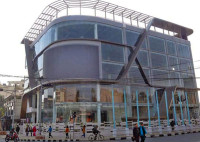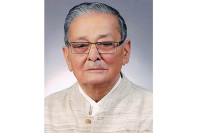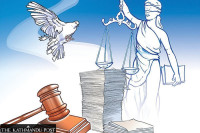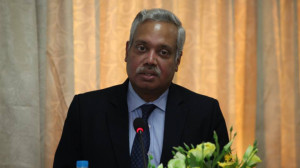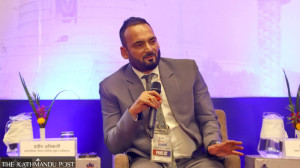National
Freed Kamaiyas’ journey from bondage to prosperity
Before liberation in 2000, Asturni Dagoura worked tirelessly, on a landlord’s farm, struggling with debt. Now she lives with her family in her own house.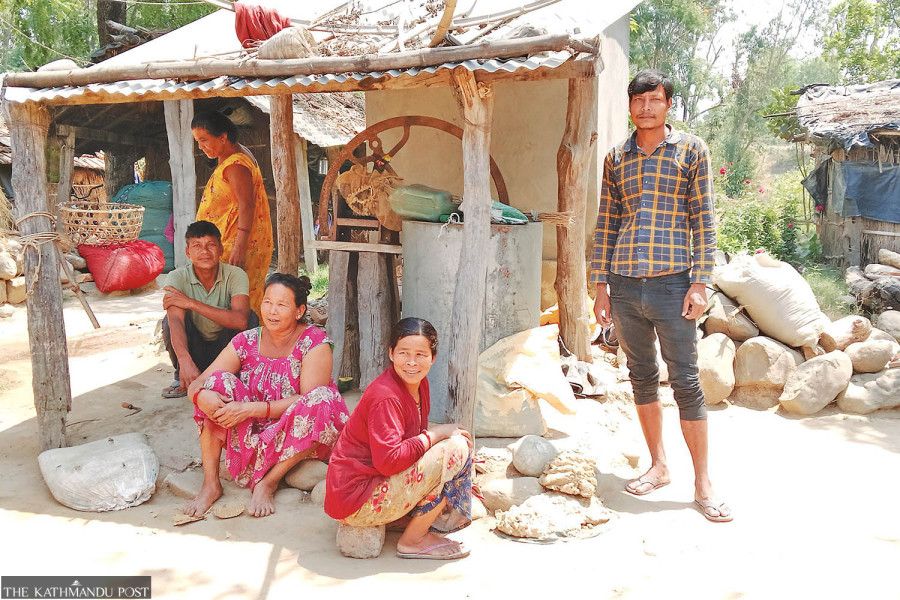
Bhawani Bhatta
Asturni Dagoura turned 75 last May. She spent more than half of her life as a Kamaiya, indentured labourer, in her landlord’s property where her children were born, grew up, eventually following in her footsteps as Kamaiyas themselves. It wasn’t long before she was able to get the family together. She was married at the age of eight to Krishna Bahadur, who also worked as a Kamaiya in a landlord’s house at Badikhalla of Krishnapur Municipality. Asturni did not know how much money he had borrowed or how long he had been there, but she joined him after their marriage.
The practice of such form of slavery (Kamaiya), which is unthinkable in the 21st century, was prevalent across the western Tarai districts of Dang, Banke, Bardiya, Kailali and Kanchanpur, predominantly among the Tharu community. Although the government had announced the liberation of Kamaiyas in the year 2000, the freed families languished in camps for years in lack of effective rehabilitation programmes.
In the past there was fear of epidemics like malaria in the Tarai. Migration was the only way to escape epidemics. Managing land, cattle, and finding accommodation in a new place was challenging. Those who could not manage often worked as labourers in other people’s fields to eke out a living. During those times, those who earned a living by working in other people’s fields were traditionally known as Kamashu (Kamaiya) in the Tharu language.
After the 1960s, many people from the hilly communities started migrating to the Tarai. After that, the landlords started exploiting the Tharu community. In the beginning, those who had a lot of land would allocate land and grain to the indentured workers. But as even landowners struggled due to dwindling land and income, inhumane treatment started as they could not even provide enough for food.
According to a study done by Ram Bahadur Chhetri in 2008, Kamaiya practice has existed for around 200 years in Nepal. Before that, the tribal Tharus owned plenty of land. Over time, as their land dwindled, they started living as Kamaiyas. They were responsible for all household chores, from farming to cattle grazing, at the estates where they worked. Men ploughed, dug, fetched and chopped firewood, while women farmed, washed clothes, and tended to the cattle.
Asturni worked from dawn to dusk. She would rise at 4 in the morning to clean the barn, feed the cattle, cut the grass and wash the clothes. After that, she would work on the farm. For all this work, the moneylender would give a certain amount of paddy and wheat, which would be insufficient. If they asked for more food, their loan would increase, making it almost impossible to escape.
Now, Asturni’s daily life has changed. She doesn’t have to work from morning till evening and her family is together. All are engaged in their own profession. She no longer has to toil like a slave.

On July 17, 2000, the Nepal Government announced the liberation of Kamaiyas. But after the announcement, there was confusion for some time. The freed workers were housed in camps and there was no work. Without employment, finding enough food became a problem. Gradually, the government began distributing land for rehabilitation.
Then they began to feel that they were free. “After we got the land, we decided to live,” said Asturni, “then we gradually started working from farming.” When the freedom of Kamaiyas was announced, 2,462 family records were collected in Kanchanpur. Then in 2002, around 2,000 families were collected and the number of freed Kamaiyas’ families in this district reached about 4,500.
Initially, they were kept in nine camps, and later rehabilitated by providing each family plots ranging from half kattha to five kattha (around 170 square metres to 1700 square metres of land) in different places of the district. The size of the allotted land depended on its value, proximity to markets, and location—rural or urban areas.
However, most of the rehabilitated Kamaiya settlements are situated along riverbanks, so there is a risk of flooding.
A year after their liberation, under the rehabilitation programme, Asturni’s family was allotted five kattha of land (1700 square metres) on the bank of Chaudhar River in Ashapur area of Bedkot Municipality in Kanchanpur district. After that, her sons, who were working in different places as Kamaiyas, reunited with the family at the same place. Asturni was very happy to have the entire family together. Vikram, her eldest son, lived as a Kamaiya in Daiji of Bedkot Municipality, while her middle child, Bal Bahadur was in Krishnapur municipality, and the youngest, Man Bahadur lived in Samadaiji in Bedkot. After their liberation, all of them received land in the same area.
They had received land on the bank of the Chaudhar River, where flooding and erosion occurred during the rainy season. There was a settlement of people from the hill community nearby. Man Bahadur Dagoura recounted how people from the community threatened them claiming that the riverside land belonged to them.
Now a lot has changed in Ashapur. The houses that were built during the rehabilitation of the freed Kamaiyas have all been replaced with concrete houses. Flooded fields have been turned into safe farmlands by constructing embankments. Some residents are engaged in vegetable farming, others as masons, while some have gone to India for employment. Everyone is engaged in some profession. Three people are employed overseas.
Initially, a total of 16 families were rehabilitated in the area, but now the number of families has reached 36. There are 15 masons with 15-20 others working as their assistants.
“Now we can do what we want. The income is also good,” said Man Bahadur, adding, “This has changed the lives of us all.” He has built a concrete house at the cost of over Rs2 million earned from vegetable farming, and sends his son to school. He grows seasonal and non-seasonal vegetables on his own five kattha and additional 10 kattha of rented land. He says that he earned a net profit of around Rs400,000-500,000 a year.
Bal Bahadur Dagoura, who spent his 30 years as a Kamaiya, is now a construction worker. After the announcement of the Kamaiya liberation, various organisations provided skill training and Bal Bahadur learned masonry.
Janaki Chaudhari of Ashapur vividly recalls her former landlord’s harsh treatment. She was forced to lift heavy loads, even while pregnant. “The pain and suffering we faced while working as Kamaiya is unspeakable,” said Janaki, who is now engaged in commercial vegetable farming. She says she earns up to Rs250,000 per season.




 15.12°C Kathmandu
15.12°C Kathmandu

